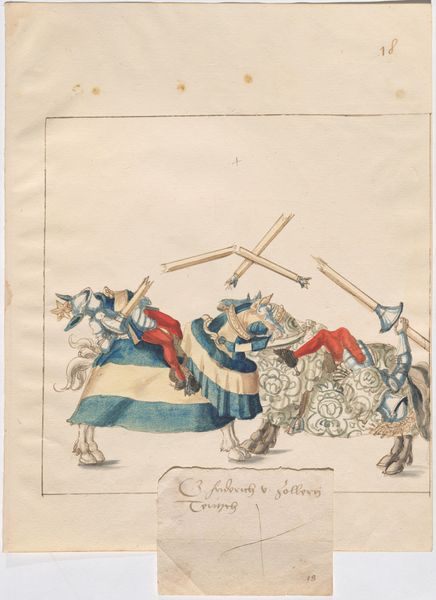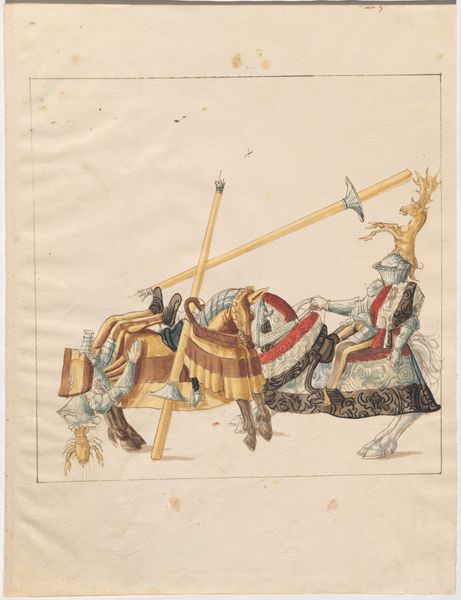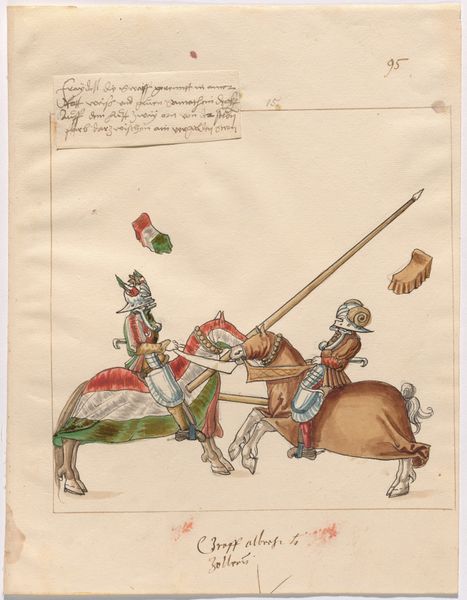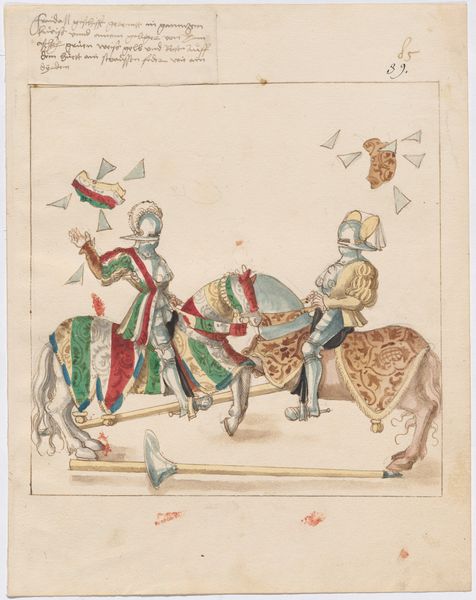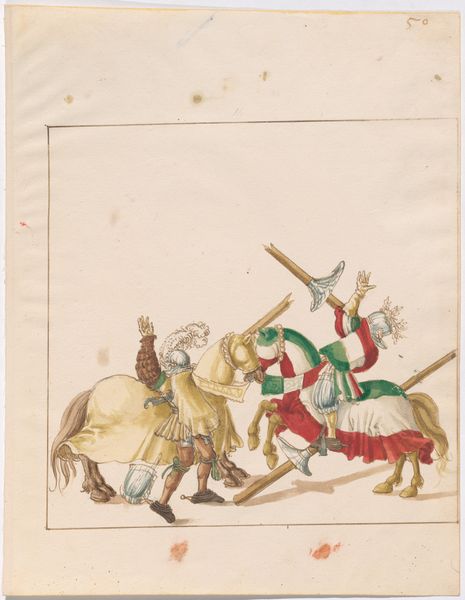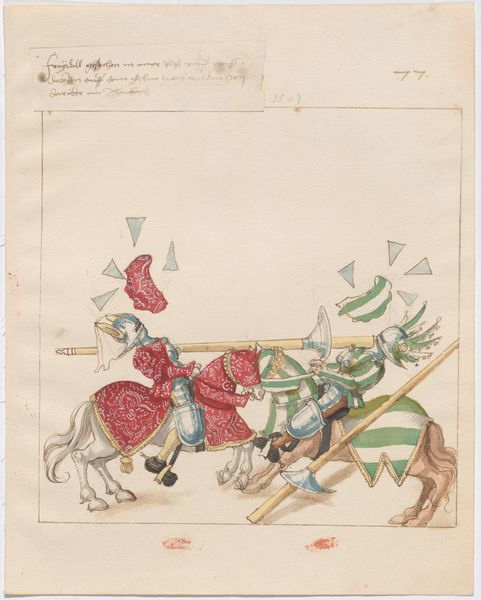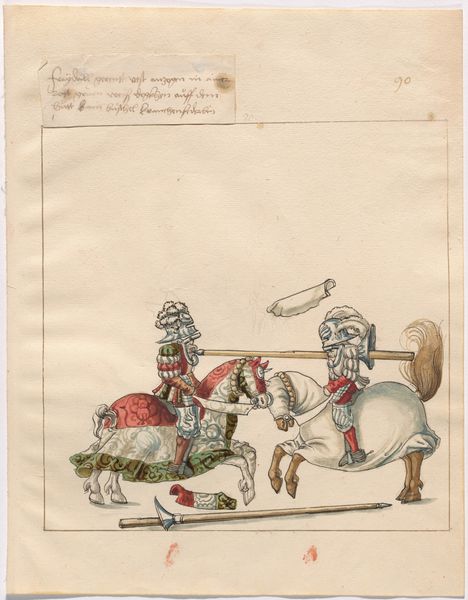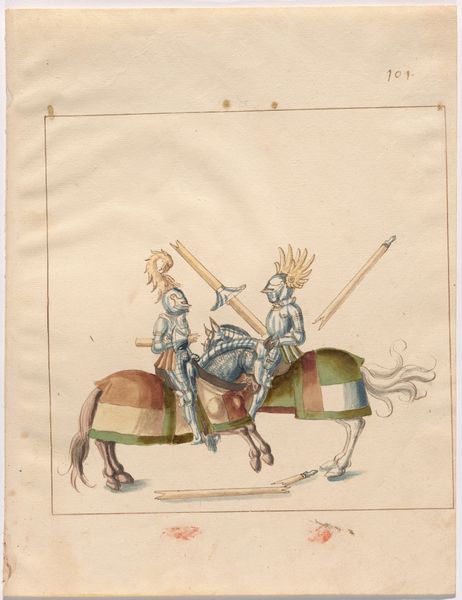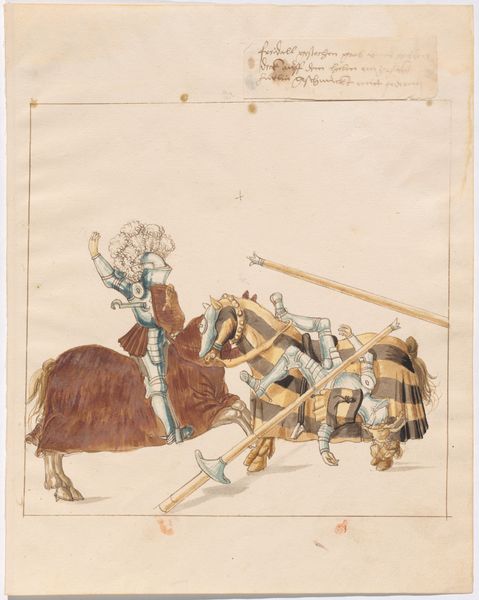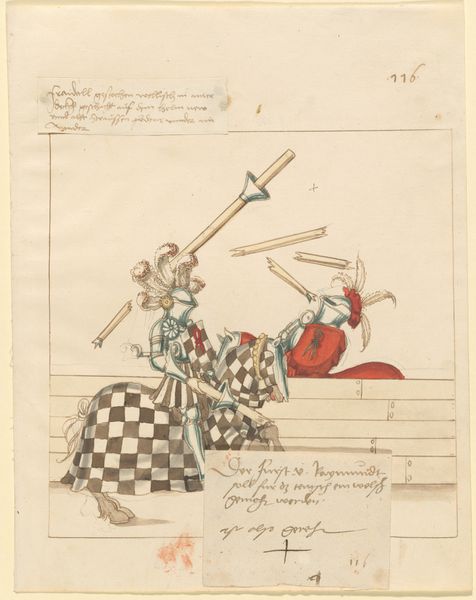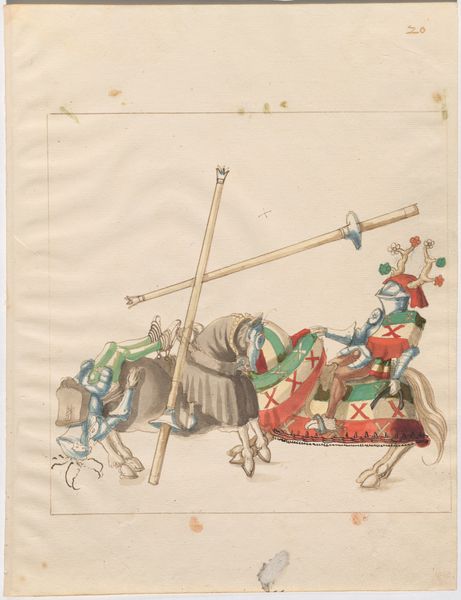
drawing, coloured-pencil, watercolor
#
drawing
#
coloured-pencil
#
water colours
#
figuration
#
11_renaissance
#
watercolor
#
coloured pencil
#
history-painting
#
italian-renaissance
Dimensions: sheet: 34.2 × 26.2 cm (13 7/16 × 10 5/16 in.)
Copyright: National Gallery of Art: CC0 1.0
Curator: Looking at this work, entitled "Mixed Jousts of War and Peace," created around 1512-1515 by an anonymous artist, I am struck by how it speaks to the complex interplay of violence and order within early modern European society. It's crafted using colored pencil and watercolor, creating an almost ethereal quality despite the subject matter. Editor: My immediate response is to the detailed rendering of material and texture: the heavy, gleaming armour, the plush textiles on the horses. The use of watercolor lends the piece an almost decorative quality which belies the grim subject. The labour and craftsmanship involved seems almost a counterpoint to the action depicted. Curator: Exactly! I see these highly ornamented figures clashing, and I can't help but consider this image in the context of class structures and social performance. How might jousting, beyond pure spectacle, act as a theater for demonstrating power and status during the Renaissance? The detailed renderings of each object become crucial visual signifiers of their societal place and its gendered representation. Editor: Precisely! Note how the opulence displayed would only be achievable through considerable exploitation of resources and, by implication, laborers. The delicate use of color, deceptively beautiful as it seems, normalizes these social conditions; a perfect example of luxury produced upon layers of societal injustice. It encourages us to question its origins in systems of power. Curator: Yes, the visual splendor naturalizes and even celebrates structures of power. Viewing this piece critically, we can address this artwork's potential endorsement of unequal class, racial and gender dynamics while offering ways we can challenge normative values and historical interpretations. How can we challenge the legacies of historical and systemic oppression perpetuated by such imageries? Editor: The drawing’s creation involved access to specialized pigments and tools as well, the final work becomes more than the surface appearance of chivalry, extending to the modes of its production, labor conditions of such making and how those modes reflect prevailing political economies of that historical moment. What processes helped forge its existence? Curator: Reflecting on our conversation, it strikes me that the image exists as an exercise in cultural framing and the selective valorization of dominant power, masked in idealized martial elegance. Editor: Absolutely. Understanding that process, from acquisition of materials to artistic execution, unearths a far deeper significance. It provides critical tools for addressing history through art.
Comments
No comments
Be the first to comment and join the conversation on the ultimate creative platform.
